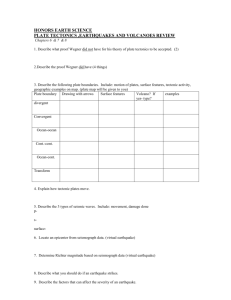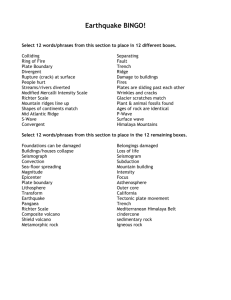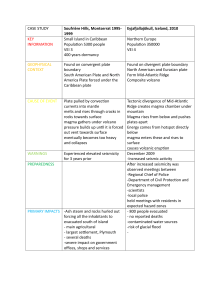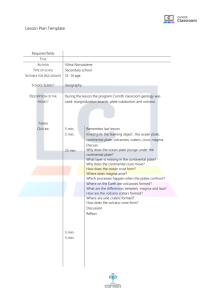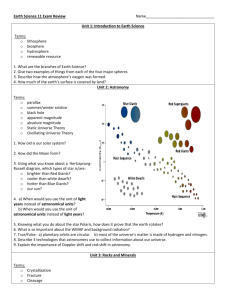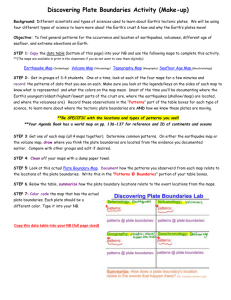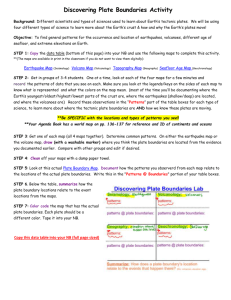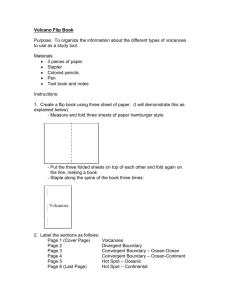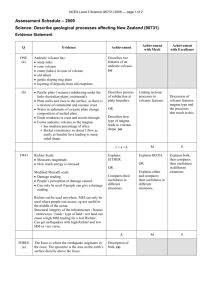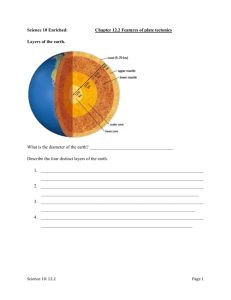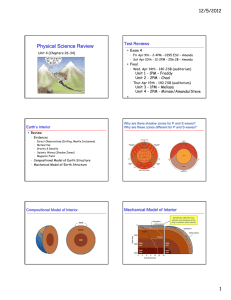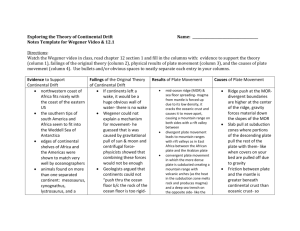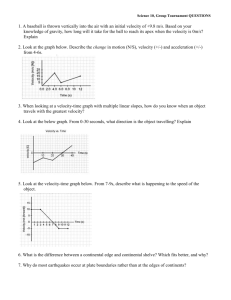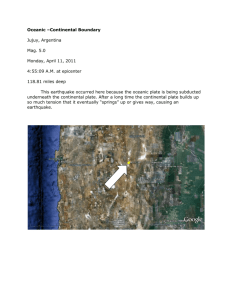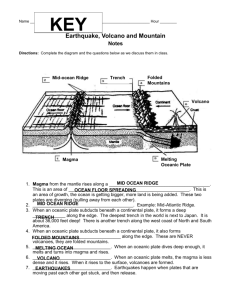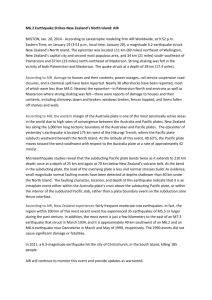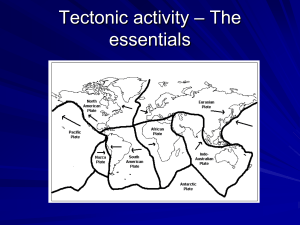SES4U Plate Tectonics Unit Test * Review Questions:
advertisement
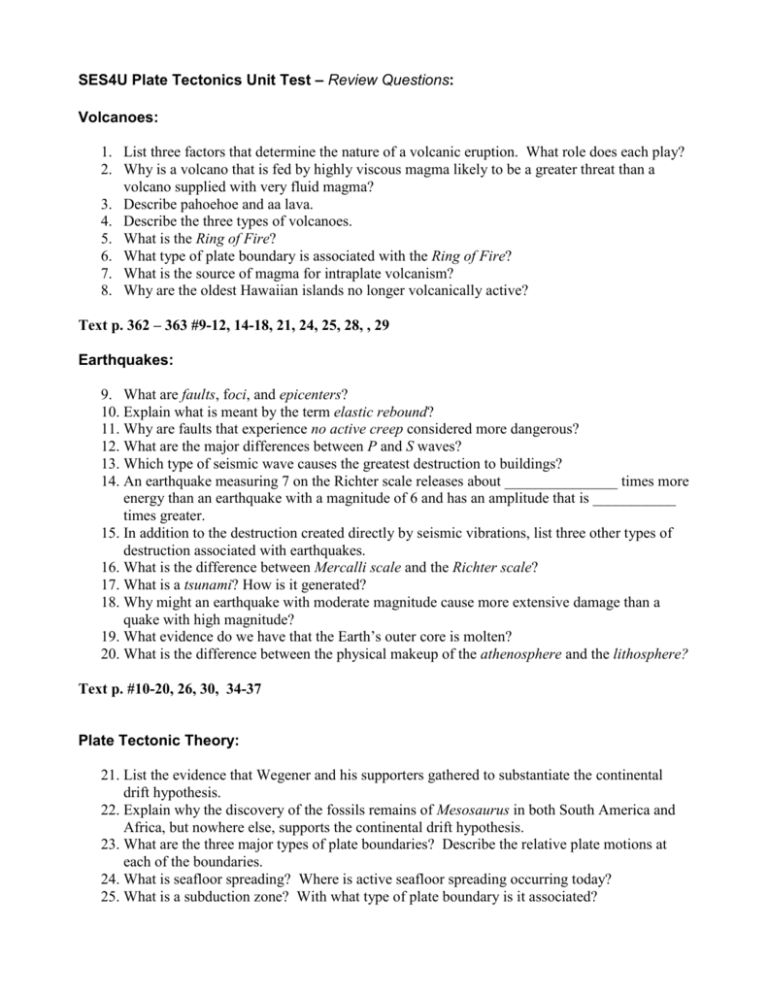
SES4U Plate Tectonics Unit Test – Review Questions: Volcanoes: 1. List three factors that determine the nature of a volcanic eruption. What role does each play? 2. Why is a volcano that is fed by highly viscous magma likely to be a greater threat than a volcano supplied with very fluid magma? 3. Describe pahoehoe and aa lava. 4. Describe the three types of volcanoes. 5. What is the Ring of Fire? 6. What type of plate boundary is associated with the Ring of Fire? 7. What is the source of magma for intraplate volcanism? 8. Why are the oldest Hawaiian islands no longer volcanically active? Text p. 362 – 363 #9-12, 14-18, 21, 24, 25, 28, , 29 Earthquakes: 9. What are faults, foci, and epicenters? 10. Explain what is meant by the term elastic rebound? 11. Why are faults that experience no active creep considered more dangerous? 12. What are the major differences between P and S waves? 13. Which type of seismic wave causes the greatest destruction to buildings? 14. An earthquake measuring 7 on the Richter scale releases about _______________ times more energy than an earthquake with a magnitude of 6 and has an amplitude that is ___________ times greater. 15. In addition to the destruction created directly by seismic vibrations, list three other types of destruction associated with earthquakes. 16. What is the difference between Mercalli scale and the Richter scale? 17. What is a tsunami? How is it generated? 18. Why might an earthquake with moderate magnitude cause more extensive damage than a quake with high magnitude? 19. What evidence do we have that the Earth’s outer core is molten? 20. What is the difference between the physical makeup of the athenosphere and the lithosphere? Text p. #10-20, 26, 30, 34-37 Plate Tectonic Theory: 21. List the evidence that Wegener and his supporters gathered to substantiate the continental drift hypothesis. 22. Explain why the discovery of the fossils remains of Mesosaurus in both South America and Africa, but nowhere else, supports the continental drift hypothesis. 23. What are the three major types of plate boundaries? Describe the relative plate motions at each of the boundaries. 24. What is seafloor spreading? Where is active seafloor spreading occurring today? 25. What is a subduction zone? With what type of plate boundary is it associated? 26. How do the age of the oldest deep-ocean sediments compare to the oldest continental sediments? How can this be? 27. Why are some Hawaiian Islands older than others? 28. Describe two mechanisms that are thought to explain plate movement via convection. Text p. 286 #10-18, 20-23-26 Groundwater: 29. What is the difference between a gaining stream and a losing stream? 30. What is the difference between an aquitard and an aquifer? 31. Under what circumstances can a material have high porosity and low permeability? 32. When an aquitard is situated above the main water table, a localized saturated zone may be created. What term is applied to such a situation? 33. What is the source of heat for most hot springs and geysers? 34. How are sinkholes created? Text p. 448 #10-15, 17, 20, 25-27,30 Glaciers: Text p. 476 #10, 11, 14, 19, 20
